Cairo is a city of energy and ancient wonders, but after a few days in the capital, we were ready for wide-open skies and shifting sands. What followed was a four-day adventure through Egypt’s remote Western Desert, with close friends joining us for the ride. From off-roading across surreal landscapes to our first night of real bush camping, this adventure revealed a wilder, quieter side of Egypt—and became one of the most memorable chapters of our trip.
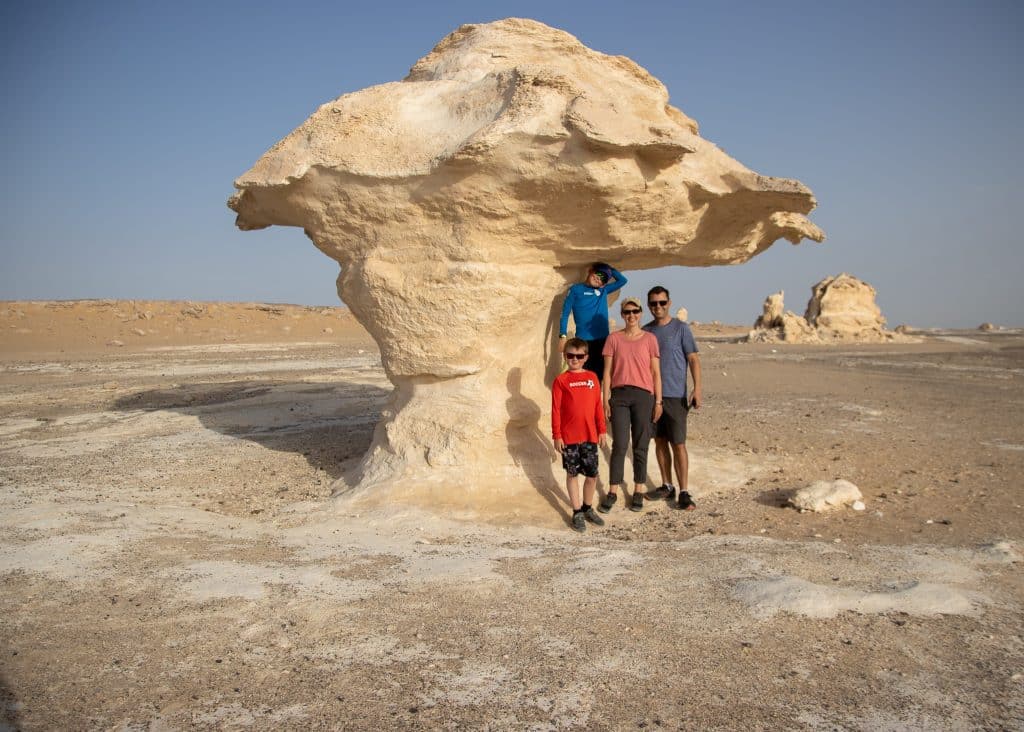
The Western Desert spans nearly two-thirds of Egypt and contains a range of unique and evolving landscapes—from the coal-colored hills of the Black Desert to the dazzling limestone formations of the White Desert, and further still, to the prehistoric fossils of Whale Valley (Wadi Al-Hitan). Over millions of years, wind, water, and tectonic shifts have sculpted these regions into something that feels otherworldly, almost like walking on a different planet.
This post is a visual journey of our time in the desert, with practical tips to help you plan your visit.
Day 1: Travel to Bahariya Oasis
After leaving Cairo, we drove six hours southwest into the desert, arriving at the Bahariya Oasis. There, we met Peter, a colourful German host of a modest desert lodge with bungalow rooms, a rooftop patio, and a heavily mineralized hot spring that we opted to admire rather than try. The kids played cards while we relaxed, eventually joining Peter for drinks and lively stories at his bar. It was the perfect way to ease into the slower pace of desert life.
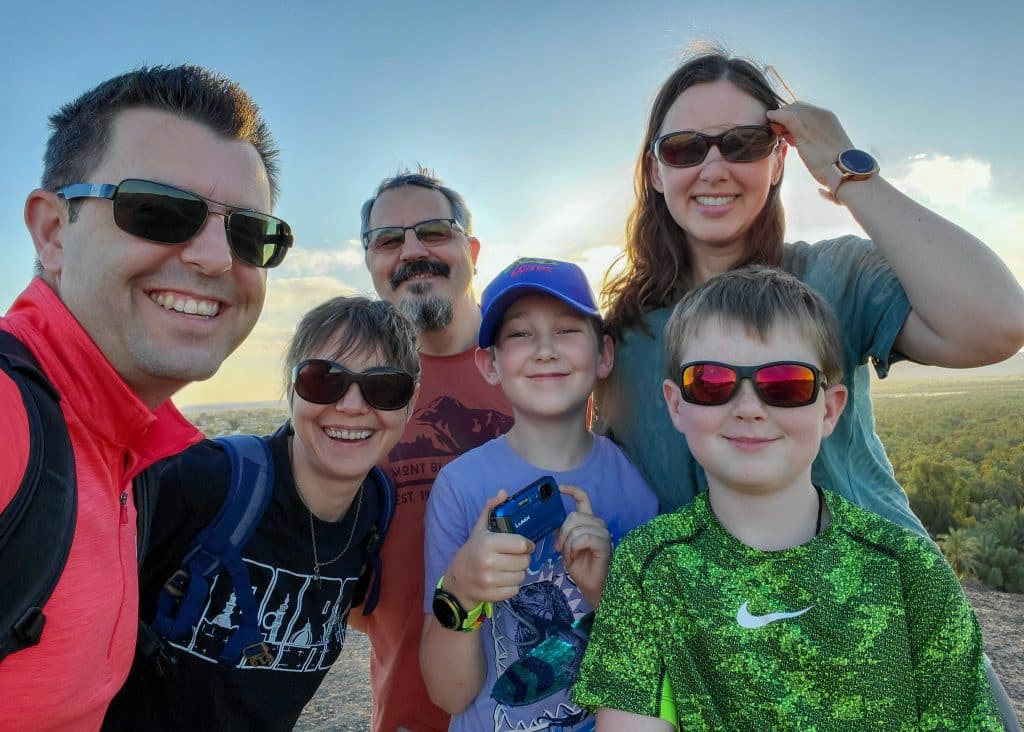
Day 2: Black Desert, Crystal Mountain & the White Desert
We set out early in 4x4s, heading first into the Black Desert. The scenery was unlike anything we’d seen—the sand was dark, as though the land had been dusted with coal. Volcanic hills dotted the horizon, and the kids loved the freedom to climb and explore the eerie terrain.
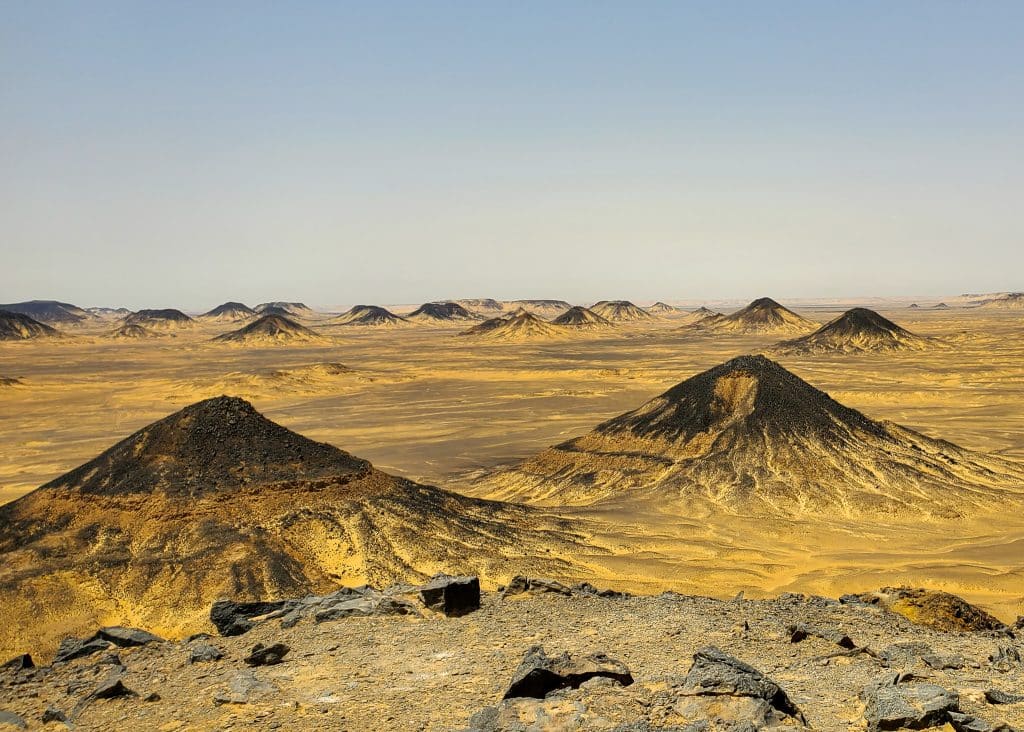

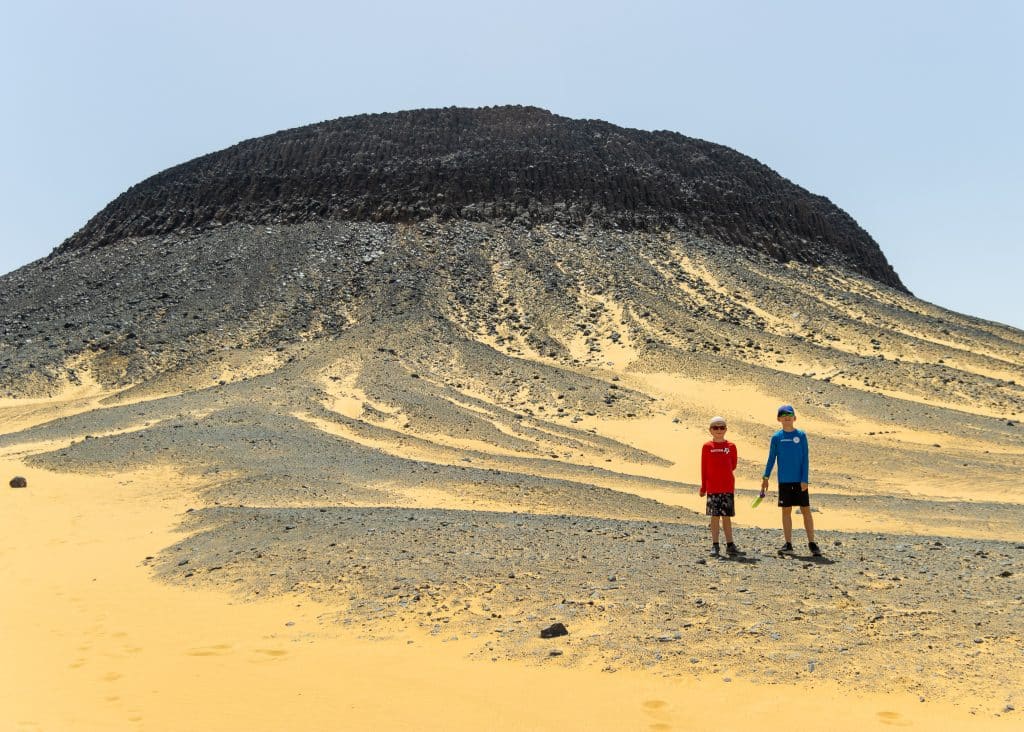
Lunch was prepared at a small desert stop with a spring-fed swimming pool. While we waited, the boys took a quick dip in the warm groundwater, which flowed through a stone aqueduct under the dining area—perfect for tired feet.
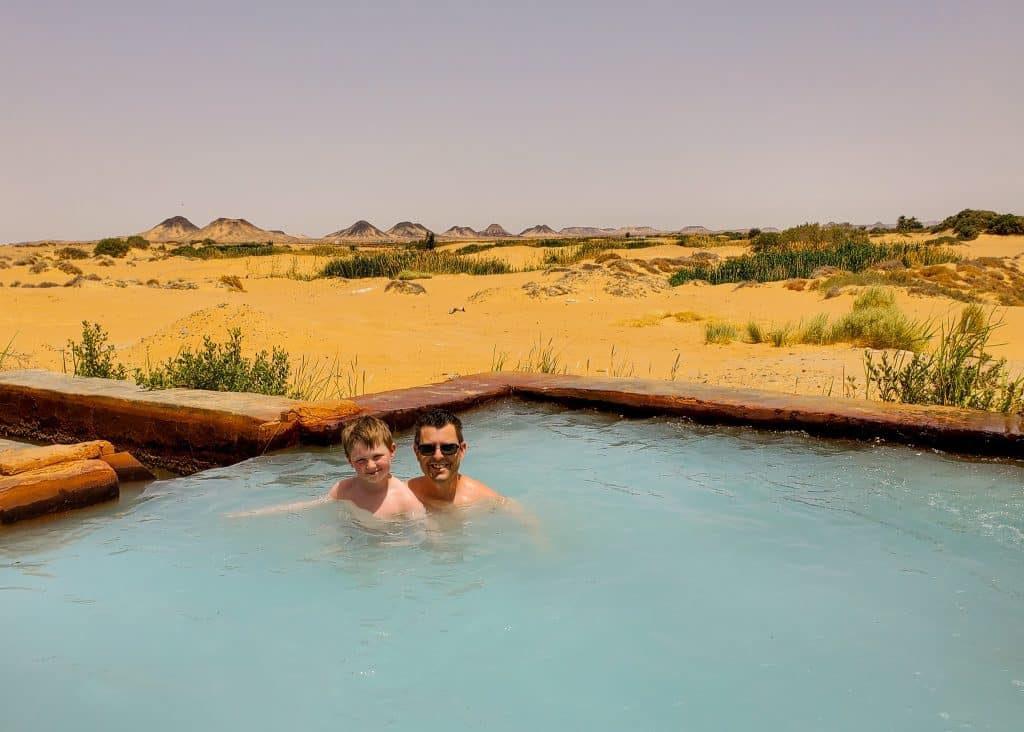
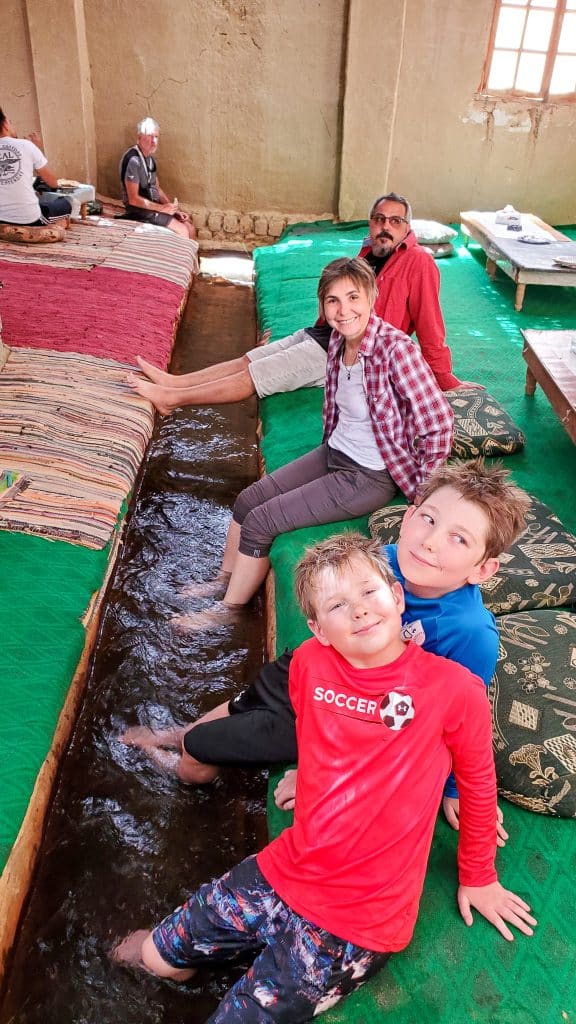
From there, we continued to Crystal Mountain, a shimmering ridge filled with quartz crystals that glinted in the sun. Though often mistaken as a boundary marker, it lies within the White Desert. It is a popular stop before continuing deeper into the pale, sculpted landscape of the White Desert.

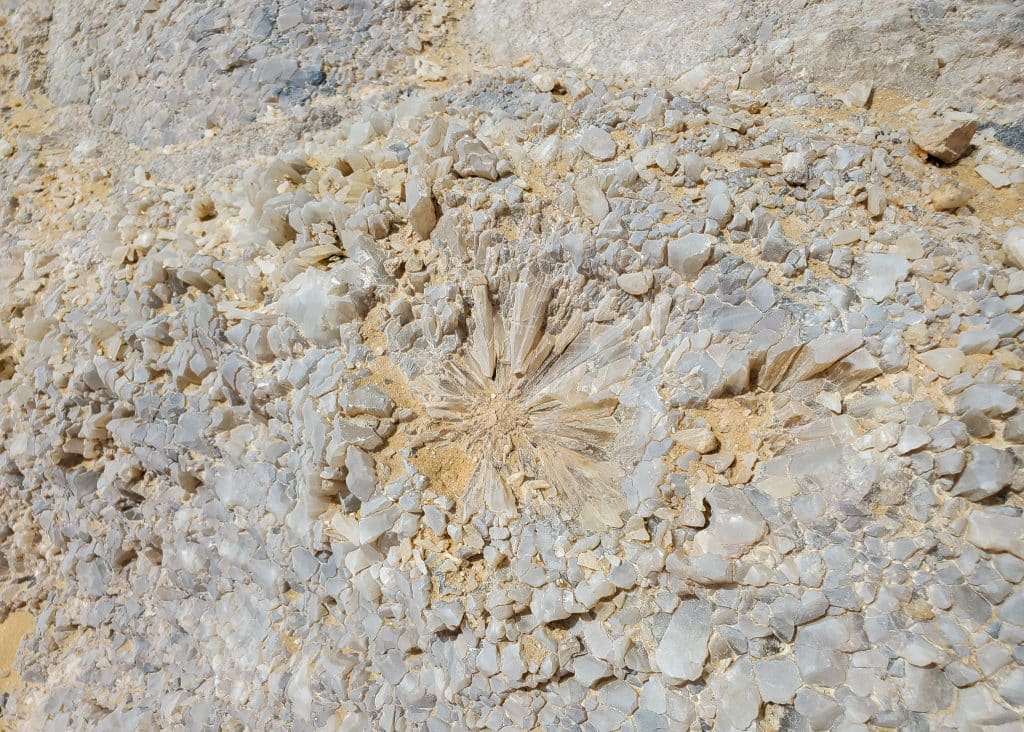
That afternoon, we reached the White Desert— a dramatic shift in landscapes. It was hard to believe we were still in the Sahara, the same desert where we trekked on camels in Morocco—this felt entirely different.
As we drove in, the golden sand gradually faded to a pale, chalky terrain. Large cream colour formations towered above. The kids wasted no time sliding down hills, climbing, and playing hide-and-seek among the formations.
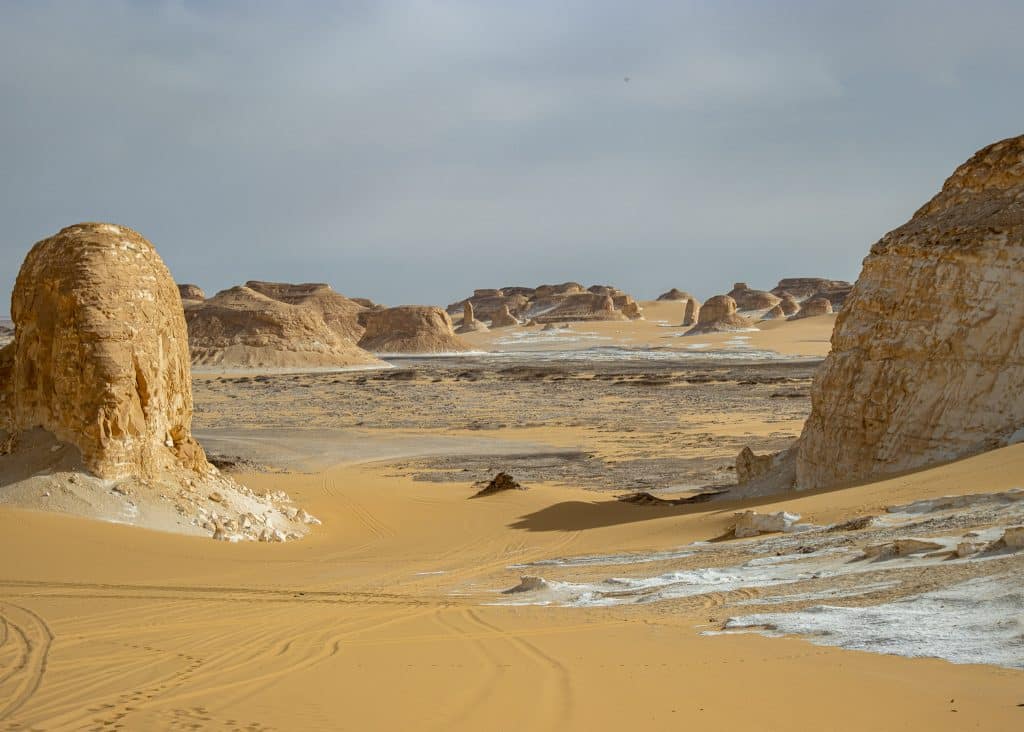
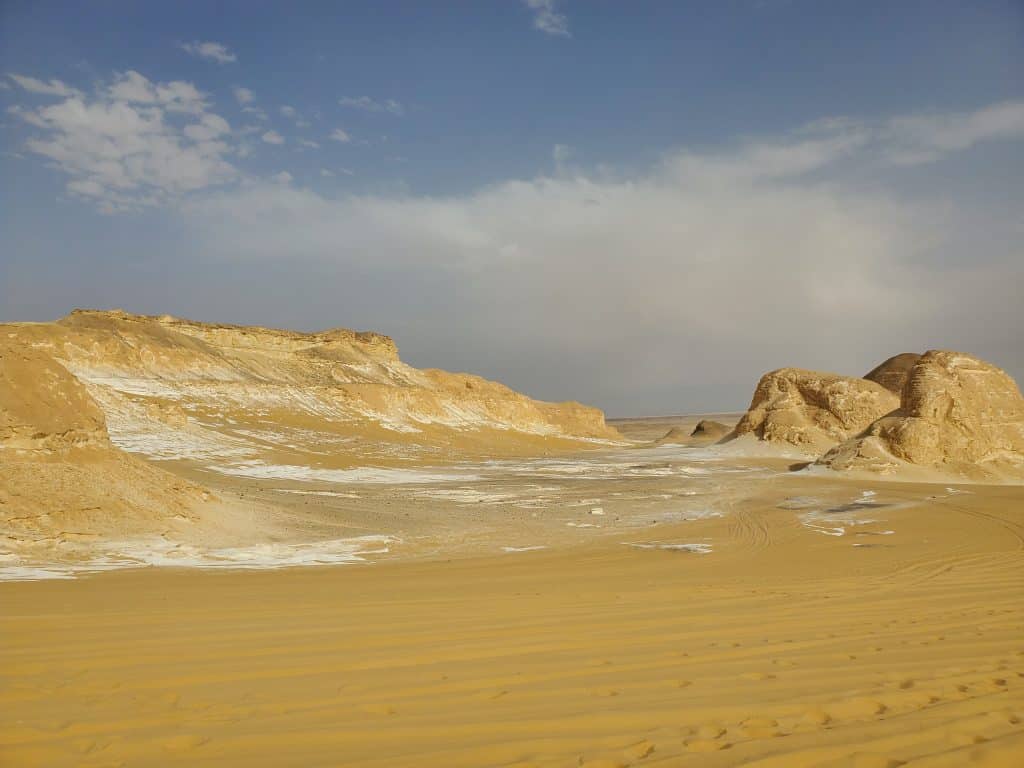
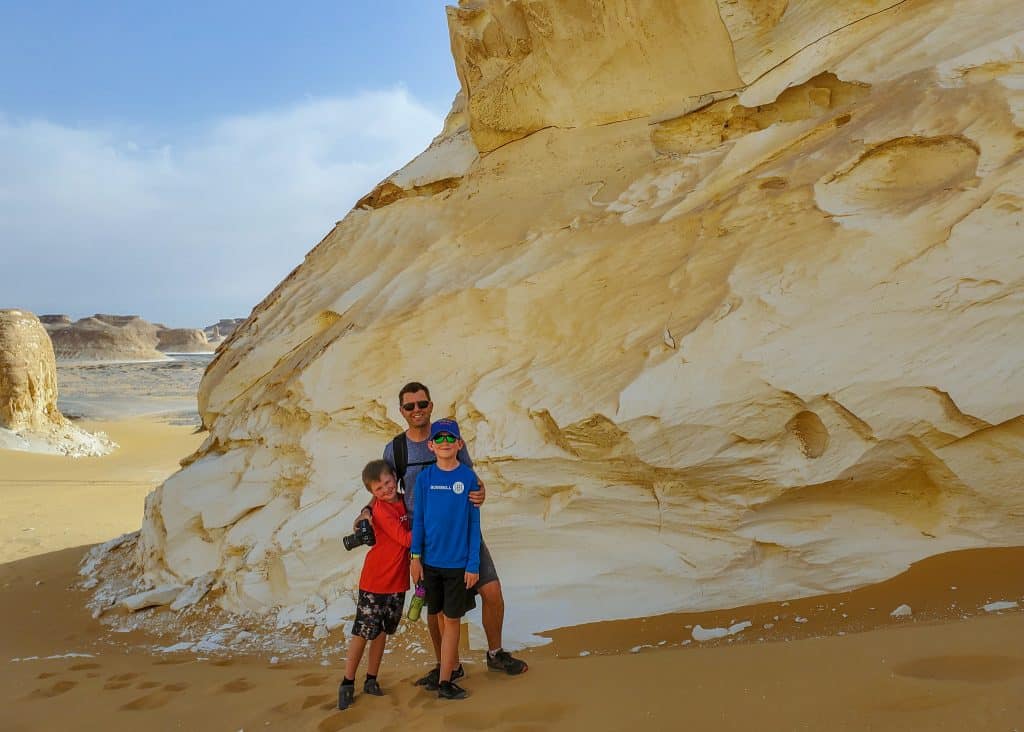
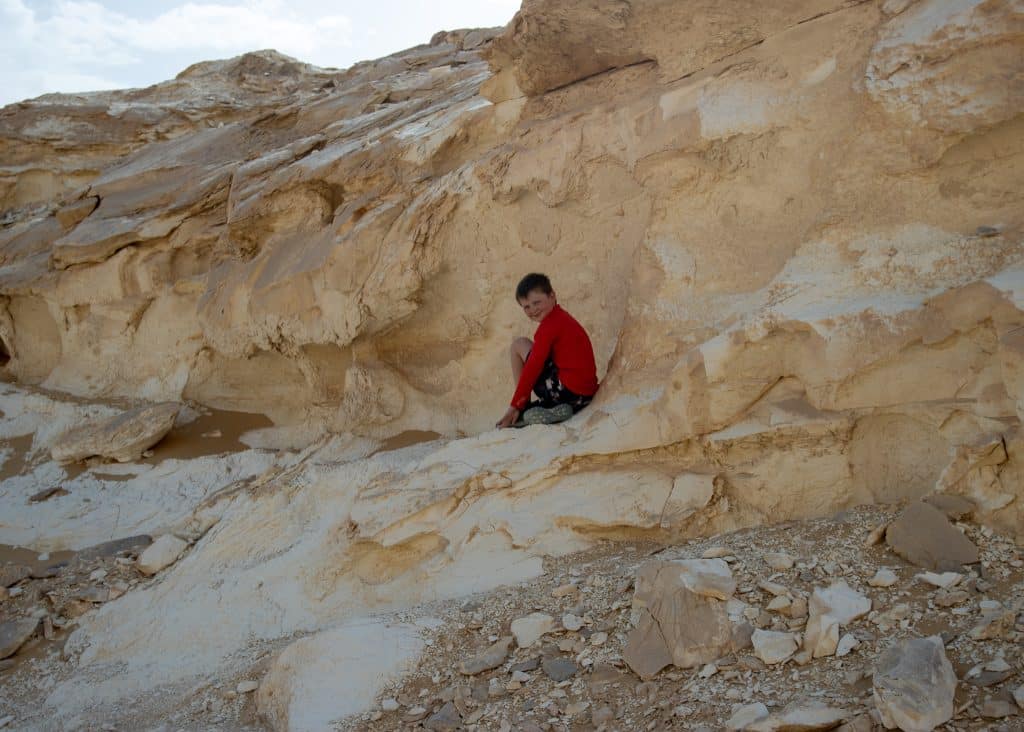
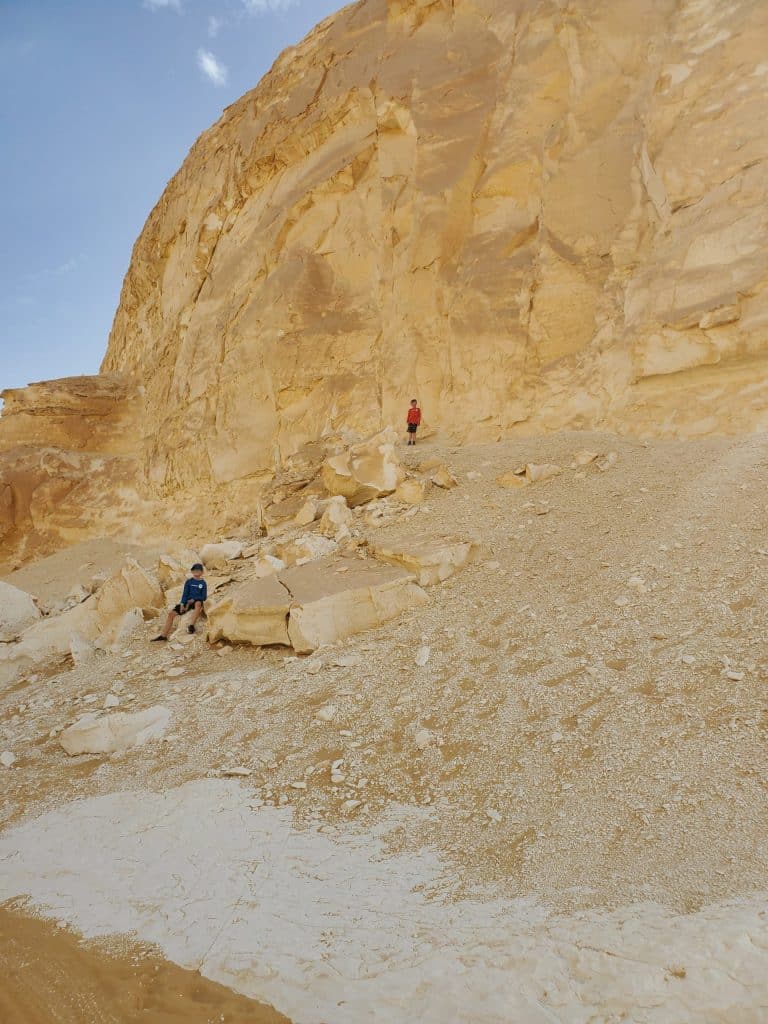
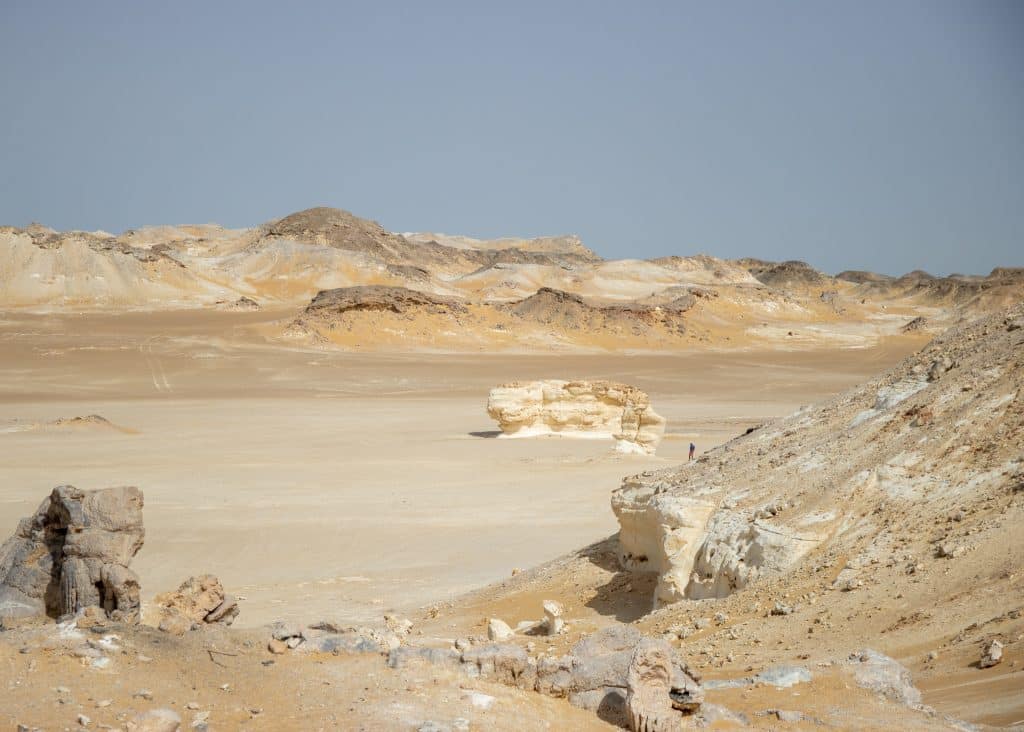
Then, as we moved further into the White Desert, smaller formations appeared. Wind and time sculpted the limestone into whimsical shapes: some rose tall, others squatted like animals or mushrooms. It felt like we were exploring a moonscape.


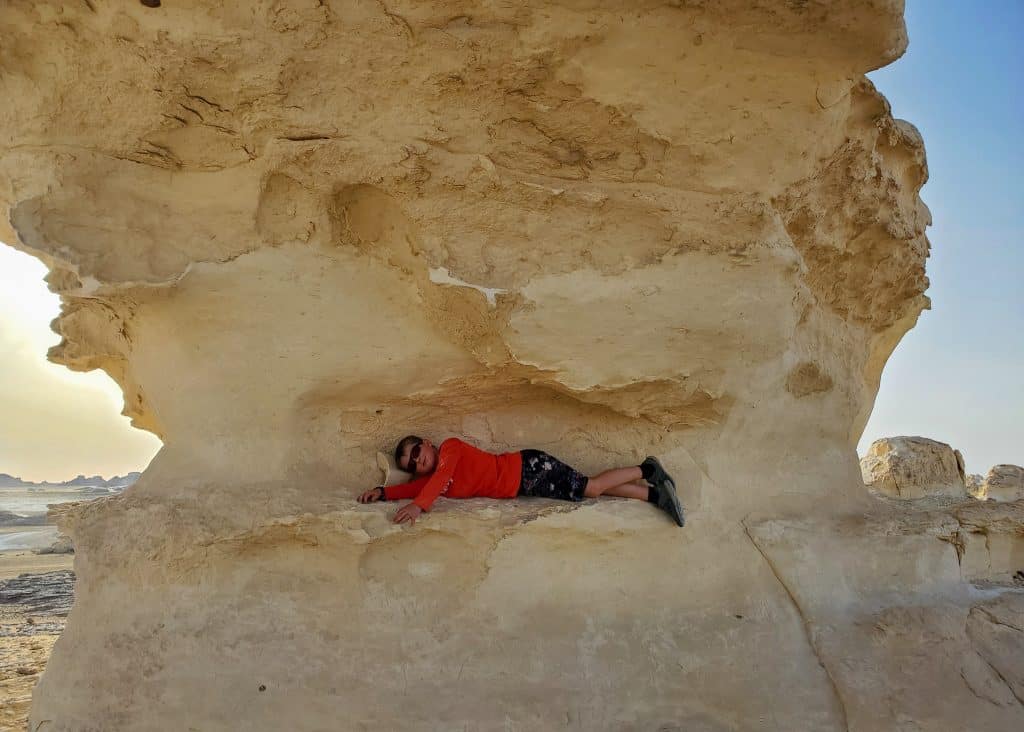
Desert Camping Under the Stars
That evening, we set up camp in the heart of the White Desert. It was our first time truly bush camping—with no running water, no toilets, and nothing but sand and sky for miles. But the experience was unforgettable.

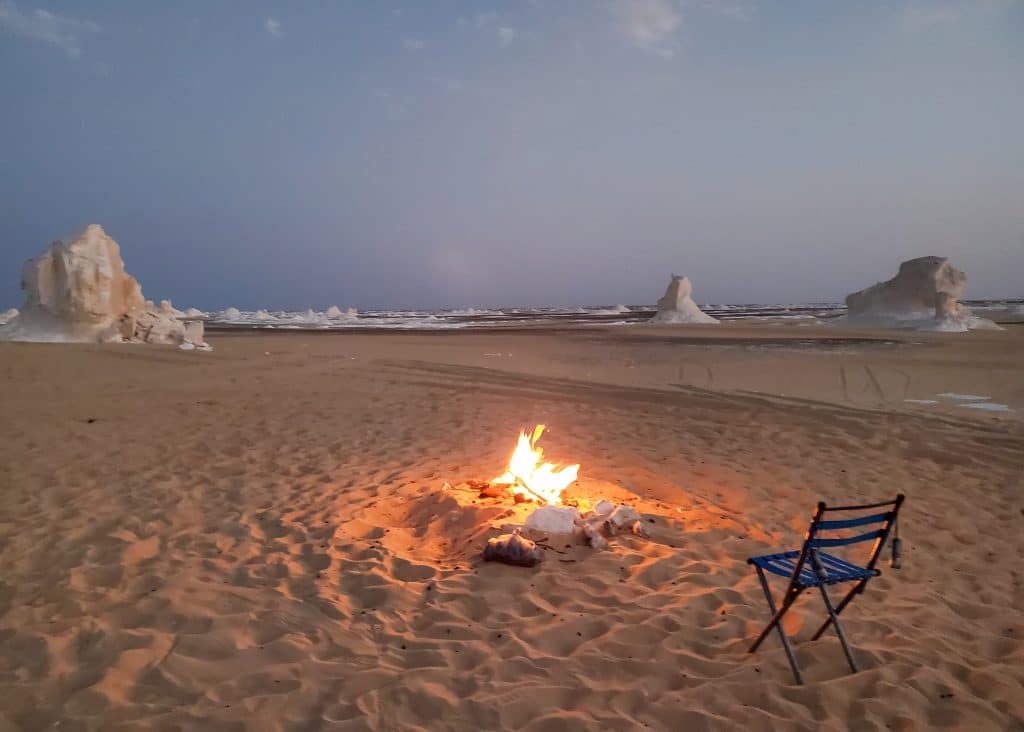
As the sun lowered, the desert lit up in soft pinks and golds. We sat, taking in the peaceful silence as night drew near, while Jackson ran toward the horizon, trying to capture the last few moments of light. We ate dinner around a small fire, sharing stories and stargazing—the clearest night we’ve ever seen. It was a magical night, made even more special as we shared it with close friends.


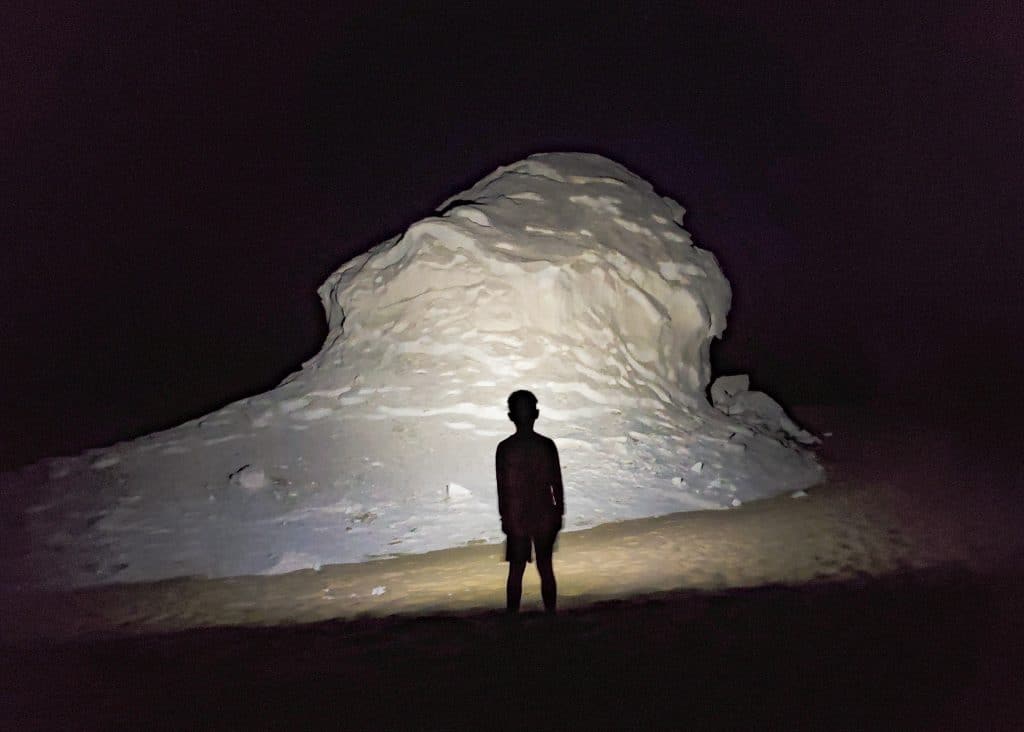
We were proud of the boys—and ourselves—for embracing the adventure. While I wouldn’t want to camp this way for days on end, for one night, it was perfect.
Day 3: Desert Formations & Return to Bahariya
The next morning, we explored more of the White Desert’s famous rock formations, including ones shaped like a rabbit, a sphinx, and the well-known “mushroom and chicken.” It was the kind of place that ignites imagination, where spotting “creatures” in the rocks felt like cloud-watching on the ground.
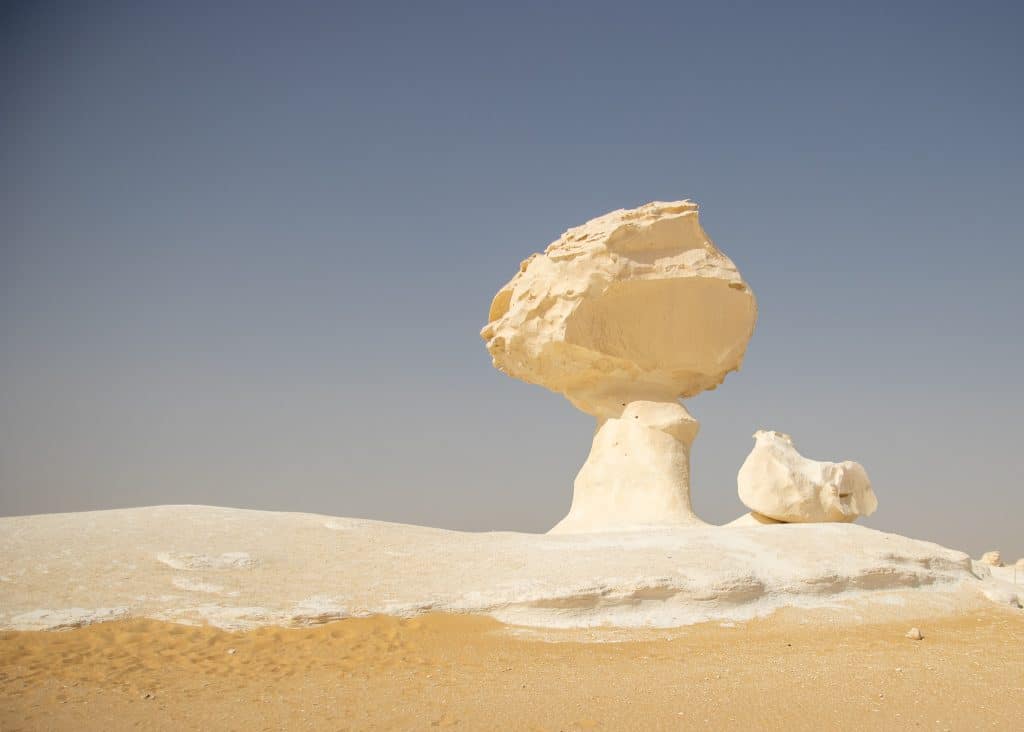
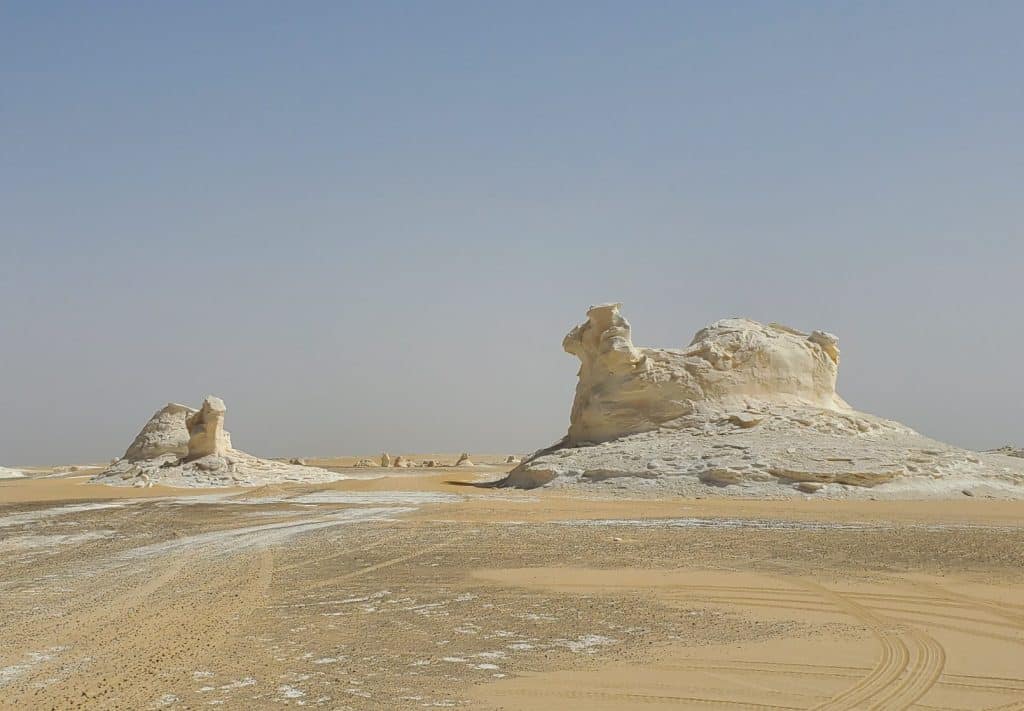
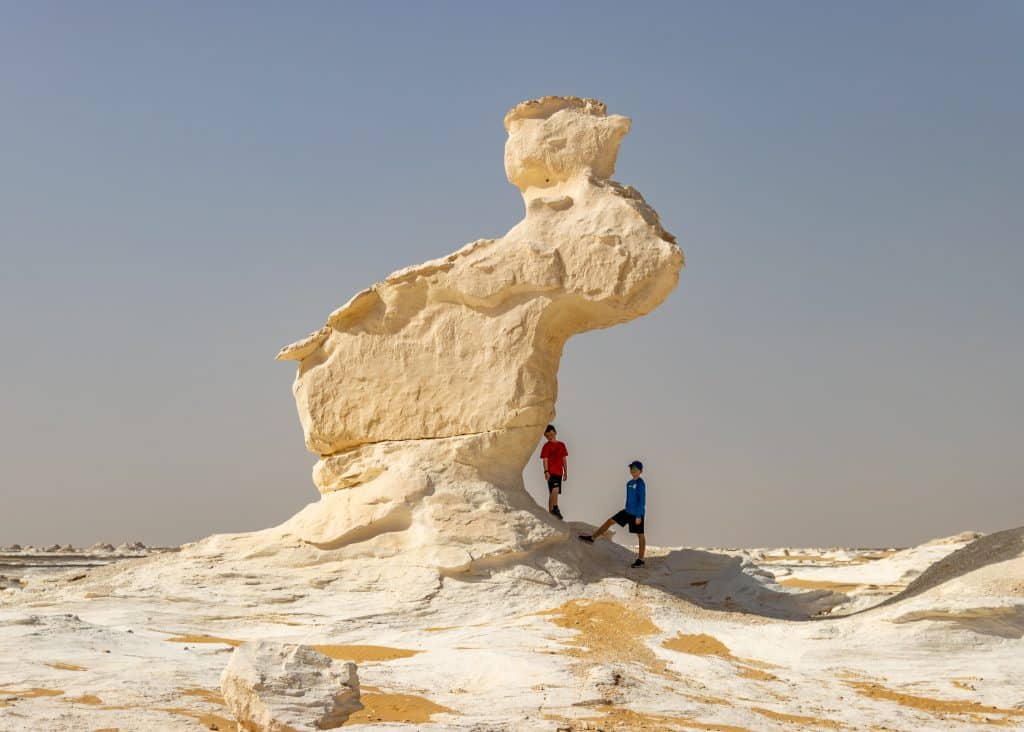
Learning that this area had once been a prehistoric seabed made it even more fascinating. The strange, bleached landscape suddenly made sense—it wasn’t just sand, but the fossilized remnants of an ancient ocean floor.
We returned to Bahariya in the late afternoon, dusty and tired but full of stories.
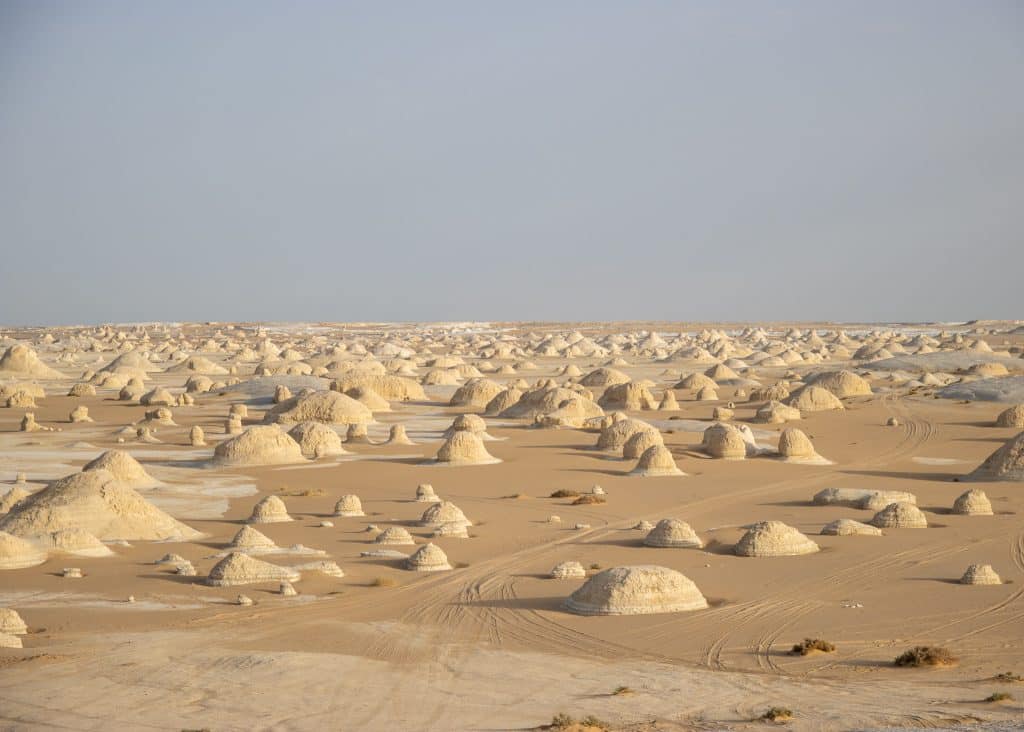
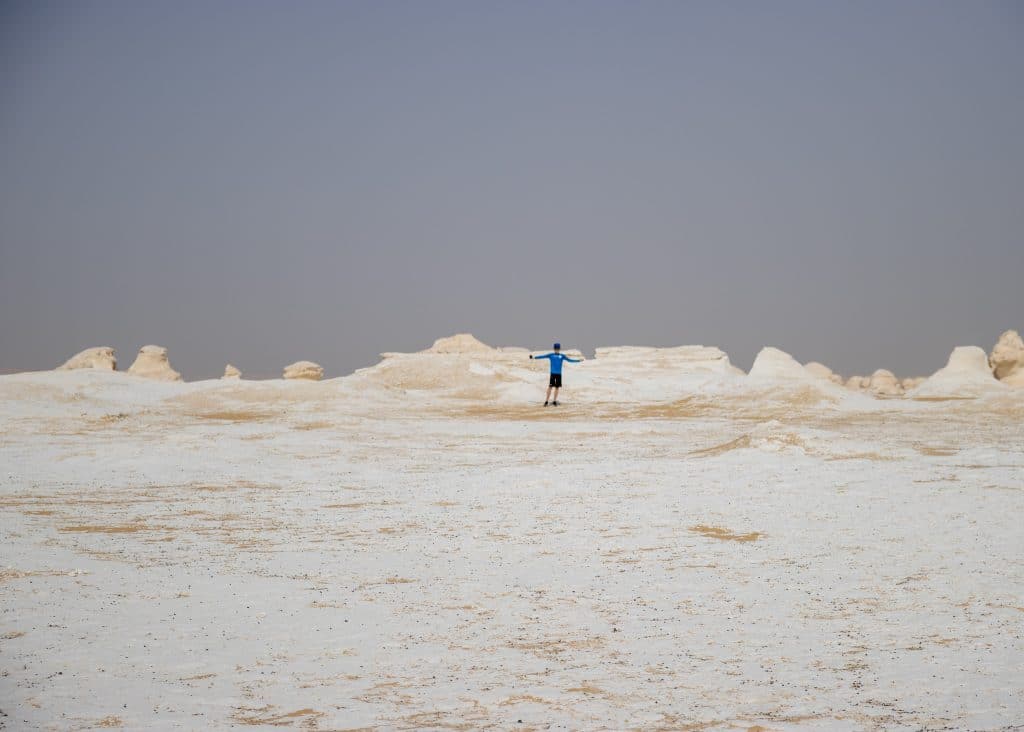
Day 4: Fayoum Oasis & Whale Valley (Wadi Al-Hitan)
On our final day, Peter arranged a detour to visit Fayoum Oasis and Whale Valley, which added about six hours to our journey back to Cairo—but it was well worth it.
Driving into Fayoum, we were surprised to see a massive lake. Its waves crashed like the sea, stretching so far we couldn’t see the distant shore. This oasis has supported human life for thousands of years and remains a key agricultural and ecological region in Egypt.
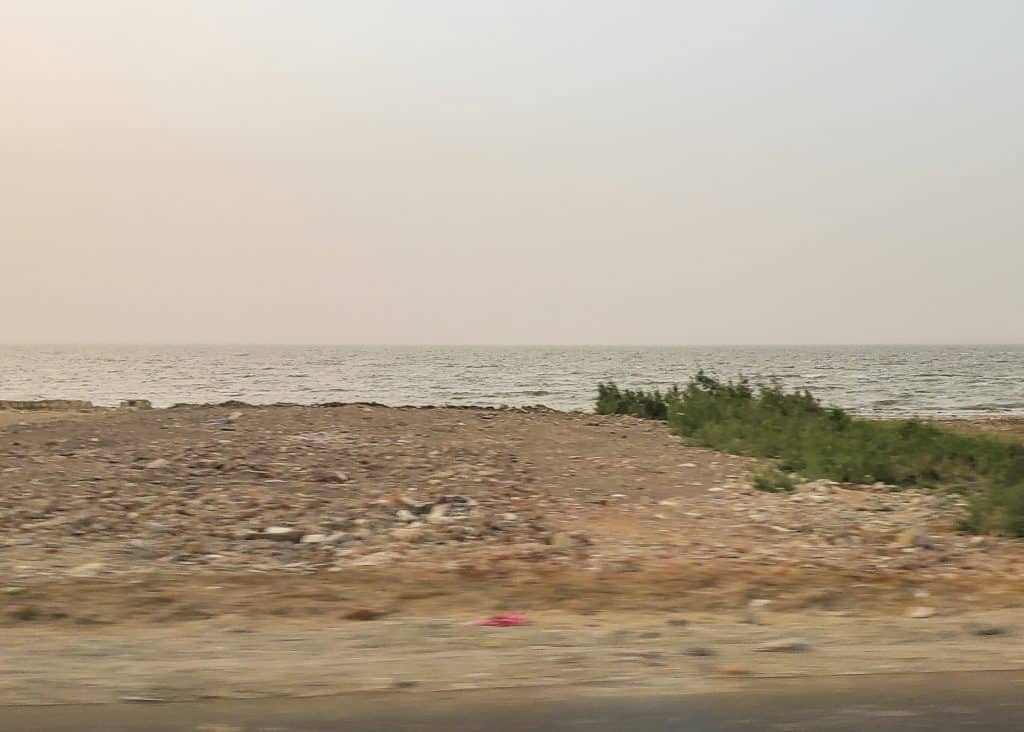
From there, we continued to Whale Valley, a UNESCO World Heritage Site deep in the desert. This fossil-rich area contains the remains of prehistoric whales that once swam these waters when the region was covered by a vast ocean over 40 million years ago. Walking among their fossilized bones, surrounded by wind-carved sandstone, felt like stepping back in time.
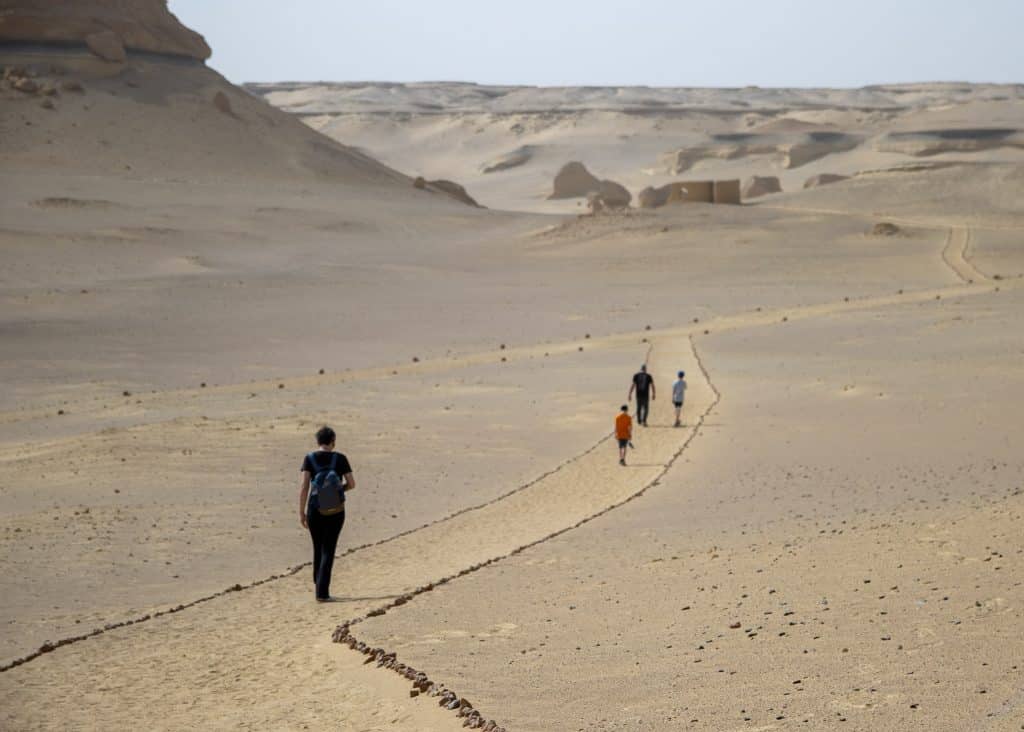
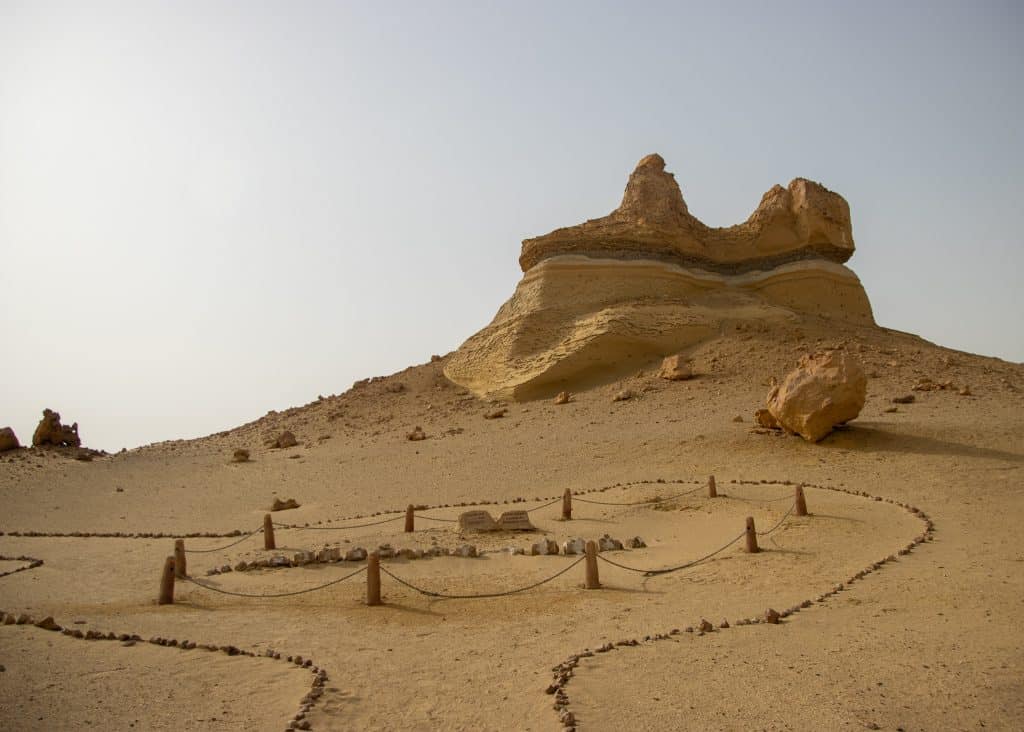
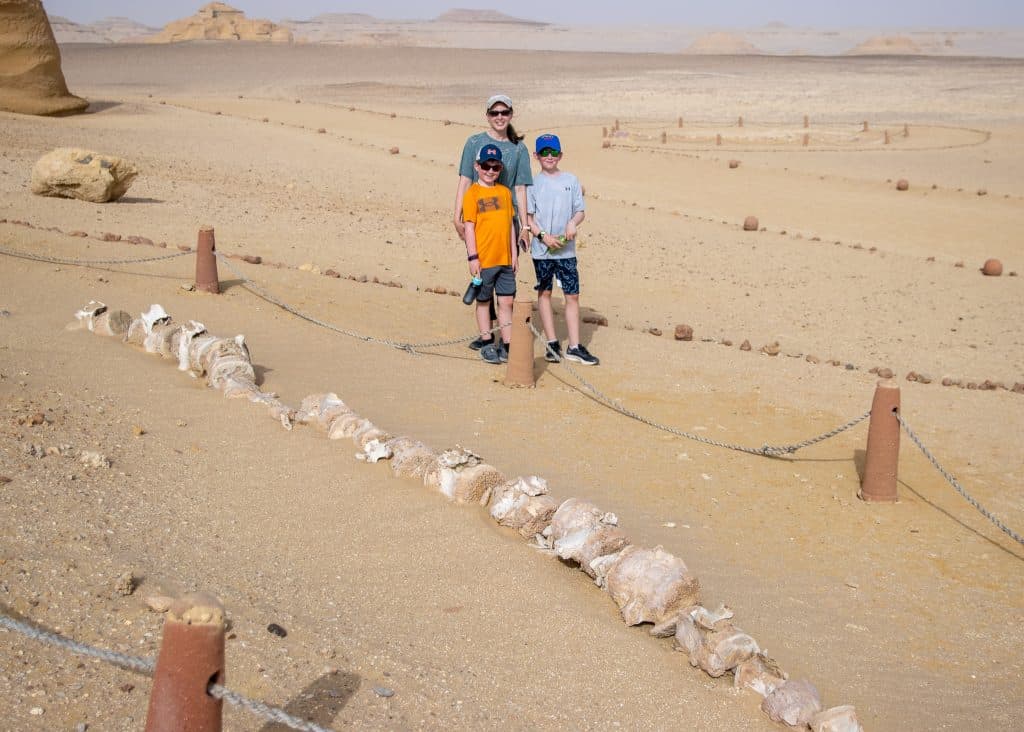

At the visitor center, we learned how these ancient mammals once had legs, slowly evolving into the whales we know today.
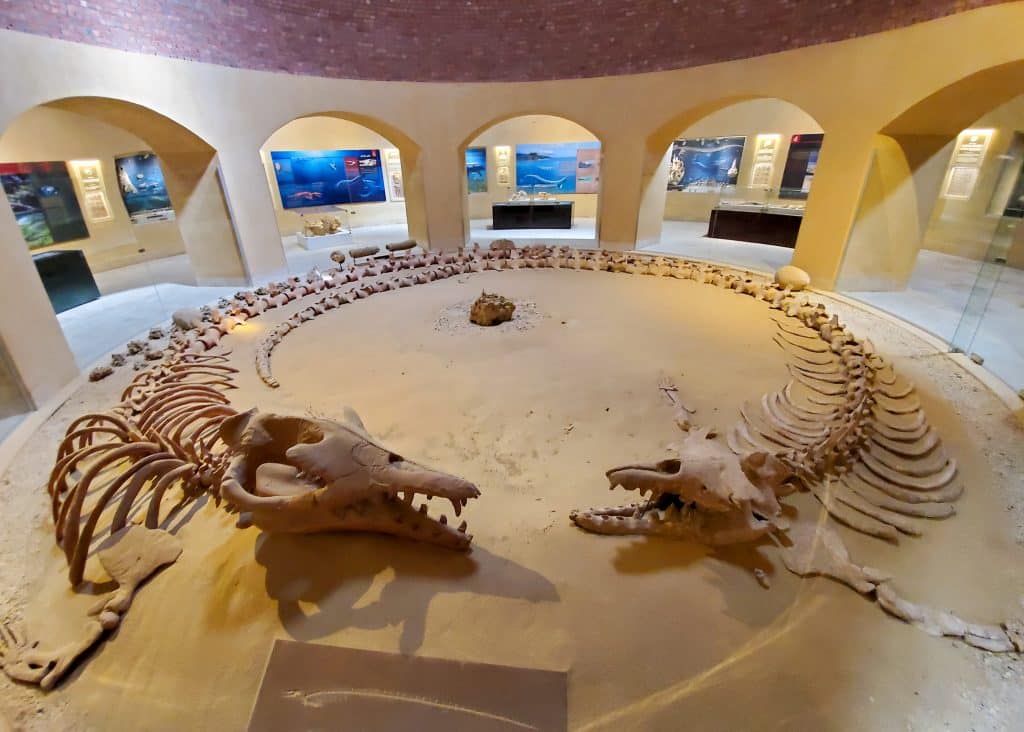
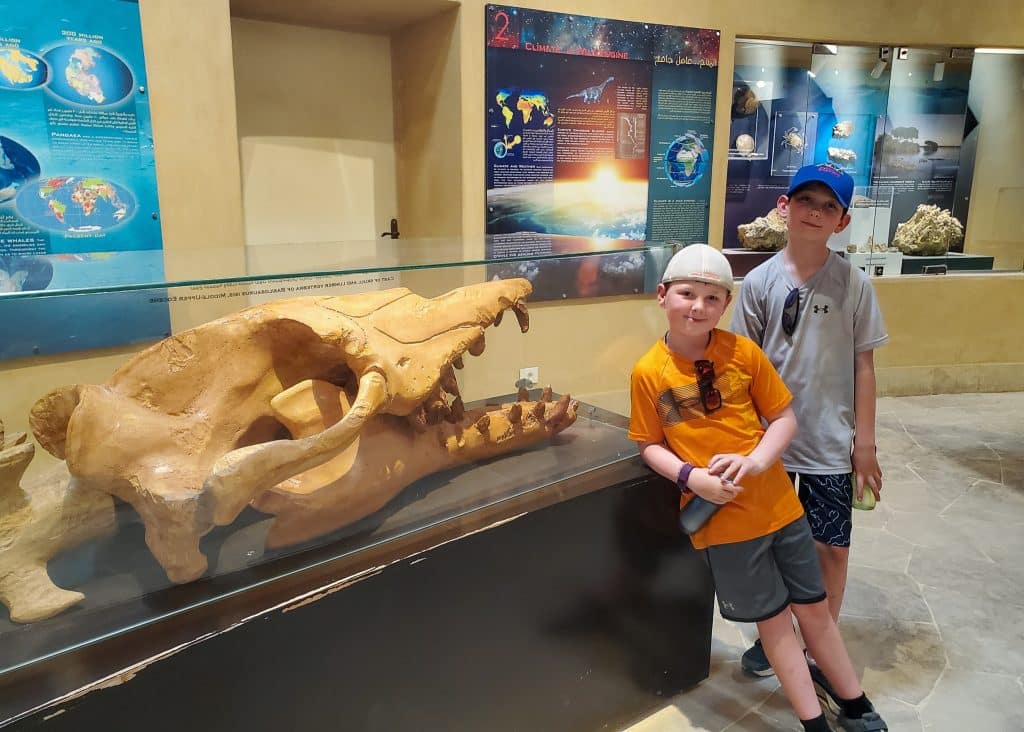
Tips for Visiting Egypt’s Desert Regions with Kids
Thinking of a desert trip with your family? Here are a few things we learned:
What to Pack:
We could only bring a small bag. The rest of our luggage stayed at the hotel in Bahariya.
• Lightweight Clothes: long-sleeve shirts and pants (sun, sand, and evening bug protection)
• Warm layers: Desert temperatures can swing from warm days to chilly nights. Bring warm layers for the evening.
• Sun Protection: Hats, sunglasses, and plenty of sunscreen.
• Basic toiletries
What to Expect
• Conditions in the desert can be extreme. Go with a reputable local guide who provides 4×4 transportation, camping gear, meals, and emergency supplies.
• There’s no electricity in the desert. Charge devices ahead of time and pack portable chargers and backup camera batteries.
• Prepare for no facilities: If bush camping, understand this means no bathrooms or running water. Toilet paper, wet wipes, a headlamp, and a good attitude go a long way.
• Sunrise and sunset are truly magical—don’t miss them.
• Stop at Whale Valley if possible: It’s off the beaten path but worth the effort, especially for kids interested in fossils or prehistoric life. Tip: Whale Valley is usually a separate tour from the White Desert, but if you’re limited on time, see if your tour operator can add it to your itinerary.
Kid-Specific Tips:
• Bring something small, like a deck of cards or e-readers, to use during the long car rides to and from the desert.
• Encourage them to run, explore and climb—they’ll burn energy and feel proud.
• Have them use their imagination to find shapes and animals in the rock formations.
• Bring water and snacks: Our tour company packed extensive snacks and lunches.
• Watch for wildlife: While the desert can feel lifeless, you may spot fox tracks, beetles, and lizards—exciting finds for curious young travellers.
• Embrace the mess—there will be sand everywhere…for days!
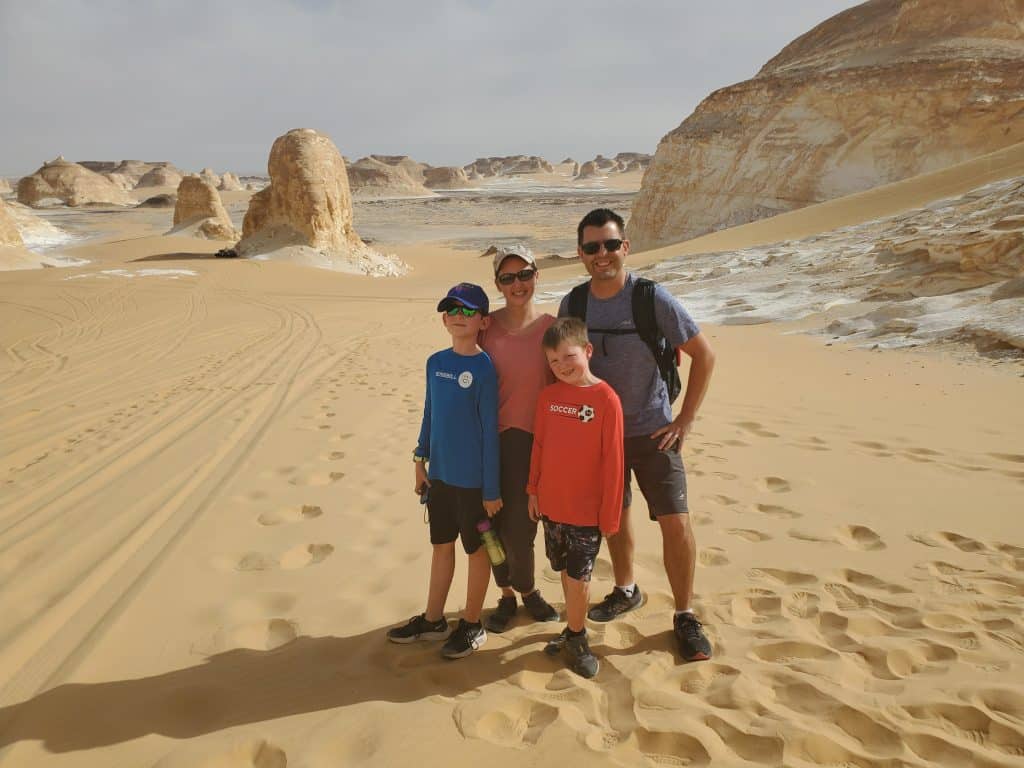
Our time in Egypt’s deserts showed us a side of the country that few travellers can see. The landscapes were otherworldly, the silence profound, and the adventure unforgettable. Whether it’s your first camping trip or just your first in the sand, this is the kind of experience that sparks imagination, opens your eyes to the world’s wild beauty, and leaves a lasting impression.
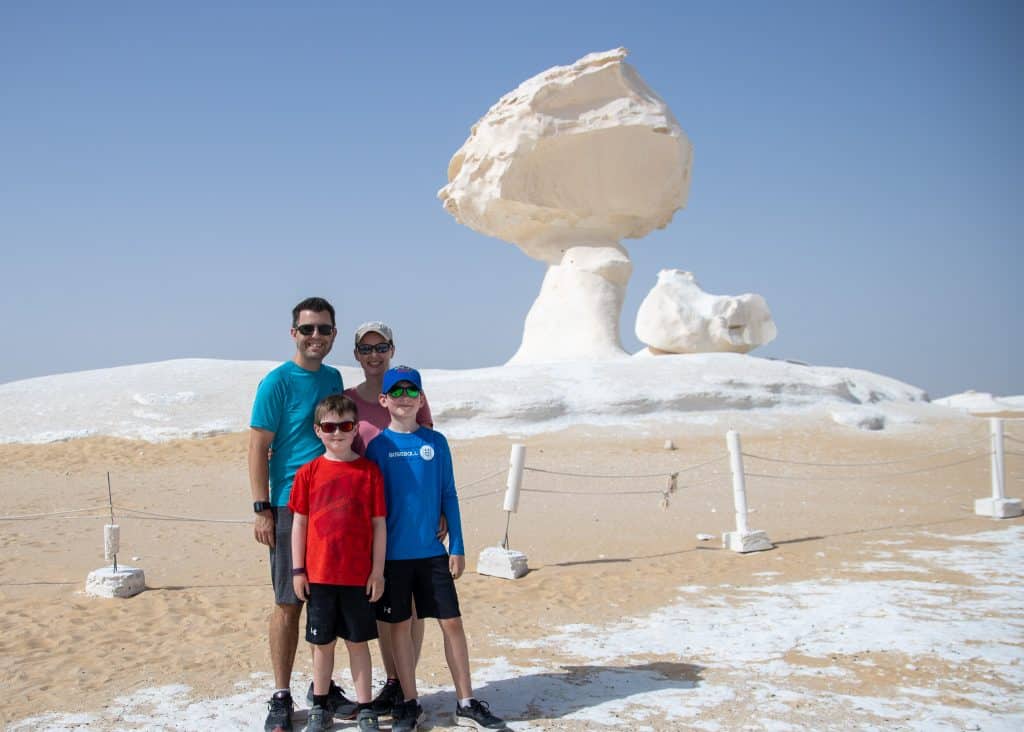
Ready to Explore Egypt?
Check out these related posts to help plan your trip:
• 3 Days in Cairo with Kids
• Discovering Egypt’s Pyramids with Kids
• Karnak Temple in Luxor: Tips for visiting with Kids
• Exploring Kom Ombo, Edfu & Khnum Temples: A Family Guide
• Visiting Aswan’s Philae Temple with Kids

